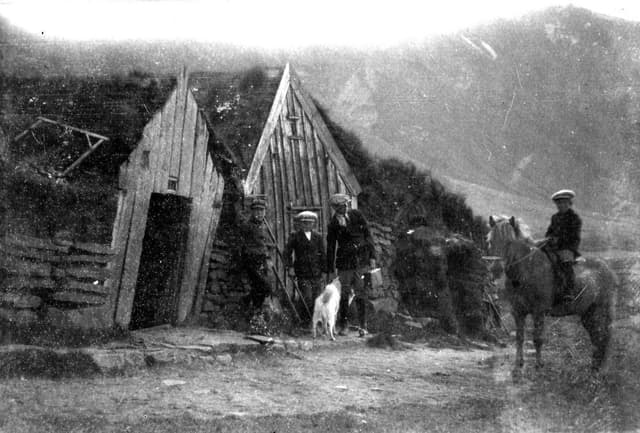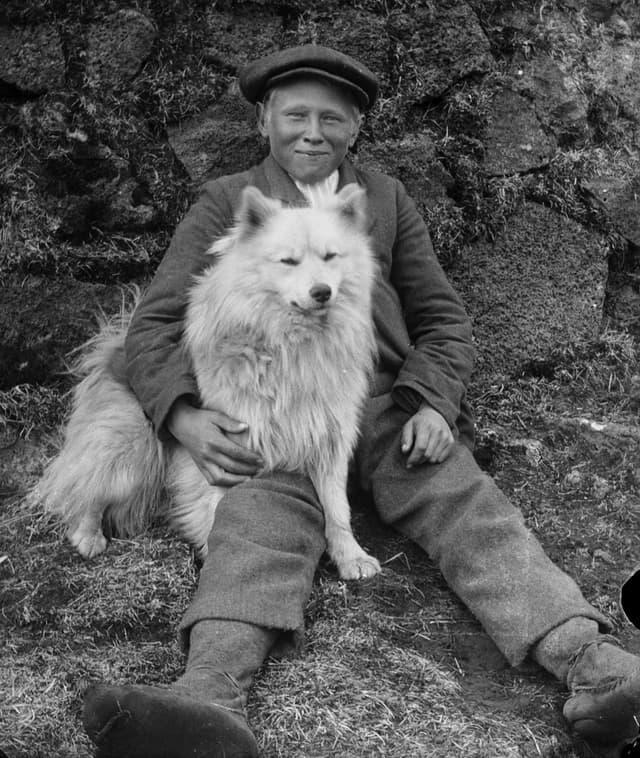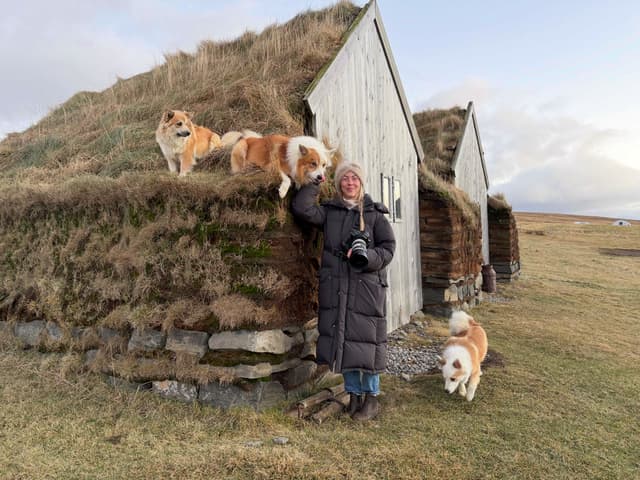
The Icelandic Sheepdog
The history of the Icelandic Sheepdog is interwoven with the history of the nation. Ever since the Age of Settlement, this one true Icelandic dog breed has stood watch alongside the people, having been brought to the country by Norse settlers in the 9th century.
The Icelandic sheepdog was not only an indispensable working animal for herding and farming but also a loyal companion who helped people survive in a harsh land. It is because of this deep-rooted connection that the dog rightfully holds the title of Iceland's National Dog - a living cultural heritage that reminds us of our origins and perseverance.
This website is dedicated to that heritage; here, we share information about the breed's history and unique characteristics, and we collect treasured stories about our national dog.
The Icelandic sheepdog was not only an indispensable working animal for herding and farming but also a loyal companion who helped people survive in a harsh land. It is because of this deep-rooted connection that the dog rightfully holds the title of Iceland's National Dog - a living cultural heritage that reminds us of our origins and perseverance.
This website is dedicated to that heritage; here, we share information about the breed's history and unique characteristics, and we collect treasured stories about our national dog.
Blog

Where is this?
I'm always looking for old photos that show dogs. A while ago, I came across this beautiful photo that I'd like to share here. Every week, an old photograph is published on [Akureyri.net](https://www.akureyri.net/is/gamla-myndin) in collaboration with the Akureyri Museum to gather information about where and when the photo was taken, and who the photographer was. This photo shows an old turf building, or more accurately, a rather dilapidated outbuilding. Three boys (or two boys and a man?), one of them on a horse, and a dog are standing outside. The photo was published in August 2025 and no information has been received. If anyone recognizes this photo or location, please contact [Akureyri.net](https://www.akureyri.net/is/gamla-myndin/250-228-2025-veistu-hvar-thetta-er). If anyone reading this has old photos in family albums or on walls showing dogs in Iceland from the old days and is willing to let me have a (digital) copy of them - please contact me. There are so few photos available, and I'd like to make more pictures of dogs visible and preserve them.

Icelandic dog names
One of our new projects was launched yesterday. We now have a [database of Icelandic dog names](https://www.fjarhundur.is/en/names) on this website. The name database is far from exhaustive, but nearly 700 names can already be found in it. The main sources for the database are the book _Íslenski fjárhundurinn_ (The Icelandic Sheepdog) by Gísli Pálsson (Bókaútgáfan Hof, 1999) as well as [questionnaire number 66](https://sarpur.is/Spurningaskra.aspx?ID=531295) from the National Museum of Iceland (does not appear to be accessible at the moment) about dogs, where I found more than 200 names that did not appear in Gísli's book. To find explanations and improve the content, I used the name database in Worldfengur, which is the [Origin Studbook of the Icelandic Horse](https://www.worldfengur.com/), [Íslensk orðsifjabók](https://ordsifjabok.arnastofnun.is/) (Icelandic Etymological Dictionary) by Ásgeir Blöndal Magnússon (1909–1987), and the [Written Corpus of the Dictionary of the University of Iceland](https://ritmalssafn.arnastofnun.is/), The Árni Magnússon Institute for Icelandic Studies. I hope the database will be useful to dog breeders, dog owners, and other enthusiasts for educational purposes and entertainment. The name database will be updated and improved as needed, and I would like to ask people to send me suggestions for more names, additions to explanations, corrections, or if they come across incorrect information. However, I want to point out that I will only add Icelandic names or names that have a history in the Icelandic language or customs. The names that appear in the name database as it is today are all from before the turn of the millennium 2000, as Gísli's book was published in 1999 and the National Museum's questionnaire is based on interviews from 1987. However, I decided to omit the names Hitler, Stalin, and Franco, which belong to modern history and are associated with war crimes.

Colors, Names and Stories
The year 2025 is coming to an end and a new year about to begin in just a few hours. Many exciting things are on the agenda for 2026 and we will begin working on new projects or their preparation very soon. Yesterday I met Lina, who is an independent photographer and will be working with me on a project about the colors of the Icelandic Sheepdog. Lina is an award-winning photographer with extensive experience in photographing dogs and horses. She is based in the Northwest of Iceland but works throughout the country, and she is a dog and horse owner. She has a wonderful eye for detail and her photos touch the soul and heart. A picture is worth a thousand words: [LinaImages](https://linaimages.com/gallery/dogs/). I look forward to sharing more about the project soon. My programmer, Júlíus Guðni, who is also my son and has been building this website according to my needs, is ready to start work. He will set up a database for the color project as well as for another project I have in the works concerning dog names. He will then improve the database for the story section of the website and assist me in setting up a Story Corner at the Heritage Center. Much work awaits me this winter, but I bid farewell to this year with gratitude and look forward to the next. Love and peace, happy new year with thanks for the old one. Photo: Lina and my dogs at home on the farm.
Contact
Lýtingsstaðir, 561 Varmahlíð.
+354 893 3817
[email protected]


